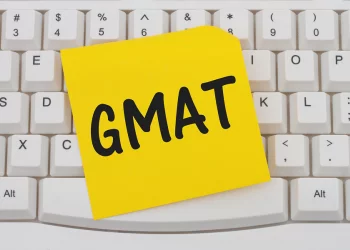
The trends below were presented by Sara Strafino, Senior Manager, Market Development at GMAC, at the 2019 GMAT Test Prep Summit in London.
Check out: Highlights from the 2019 GMAT Test Prep Summit
A shift to the East
More than 242,000 GMAT exams were taken globally in the test year 2018, which represented a slight decline on 2017. A more interesting development, though, is that the center of gravity of the global candidate pipeline is shifting east. While in the past most GMAT test takers were from the US, the East, particularly East and Southeast Asia, is now becoming the most dynamic GMAT test taking center. East and Southeast Asia accounted for 36% of all exams taken in test year 2018, followed by the United States with 30%.
So why is this happening? To find the answer, we need to consider the growth of business education in Asia in terms of both quality and quantity. The Financial Times points out:
Fast rising demand in Asia for MBAs has shifted emphasis from exporting students to western business schools to developing more in the region. China, Singapore, Hong Kong, and Australia are among those leading the way.
MBA providers in the Asia-Pacific region are going from strength to strength as exemplified by CEIBS’ impressive performance in the Financial Times’ 2019 Global MBA ranking. The Shanghai-based business school rose to fifth place this year, up from eight in 2018. The Asia-Pacific region has been the main generator of growth in global business education for several years now. Applications to schools in the Asia-Pacific region rose nearly 9% in 2018, according to the Graduate Management Admissions Council (GMAC), the organization that owns the GMAT exam.
Women make gains
One of the most positive developments in business school education over recent years is the ever-growing share of women in the global candidate pipeline.. Women sat 46% of GMAT exams in test year 2018, compared with 39% in 2009.
It is no secret that MBA classrooms tend to be a male-dominated preserve. The percentage of global female applicants currently stands at about 38%. Some top business schools, particularly in the US, have been more successful in boosting female representation than others. Women account for an average 42% of MBA students at the top 10 US business schools in the Financial Times’s 2018 ranking. That share stands at 36% at the top 10 European schools and 34% for the top 10 schools in Asia.
Younger GMAT test takers
Another trend worth mentioning is that an increasing number of younger candidates (aged below 25) are taking the GMAT because more and more Business Master’s programs are accepting the exam. Strafino says:
A lot of these Master’s programs target the pre-experience students.
Examinees below the age of 25 now account for more than half of GMAT exams globally, with the share of exams taken by young applicants growing to 51% from 40% over the last 10 years. Currently, more Master’s programs (3,389) accept the GMAT than MBA programs (3,300). The MBA still attracts the majority of GMAT scores (62%) but the percentage has been declining.
Application volumes to US programs fall
Due to a variety of factors, business schools in the United States have been experiencing a decline in application volumes, while programs in other world regions have been enjoying gains. The US keeps losing its appeal among international candidates, with many of those who considered applying to US programs saying they no longer wanted to apply, according to GMAC. Overall, US business schools experienced a nearly 7% decline, with domestic applications down 1.8% and international volume down 10.5%, according to the 2018 GMAC application trend survey.
Check out: Employers Like a Good GMAT Score
Contrary to expectations, UK business schools are enjoying healthy application numbers. The Financial Times reported that MBA programs at top UK business schools are set for a very strong year after applications climbed by as much as 21%. Warwick Business School, Cass Business School, and Cranfield School of Management predict double-digit percentage year-on-year increases for applications to start in autumn 2019. One reason is that the devaluing British pound makes UK programs more affordable. Experts also point to the US trade war with China which has reduced the attractiveness of American MBA providers. Tightened visa restrictions in the US undoubtedly play a role too.
GMAT and business education trends in general are dynamic and to a large extent shaped by wider economic and political developments. What remains the same, however, is the fact that entry to business school is highly competitive and serious preparation is as crucial as ever.


Comments